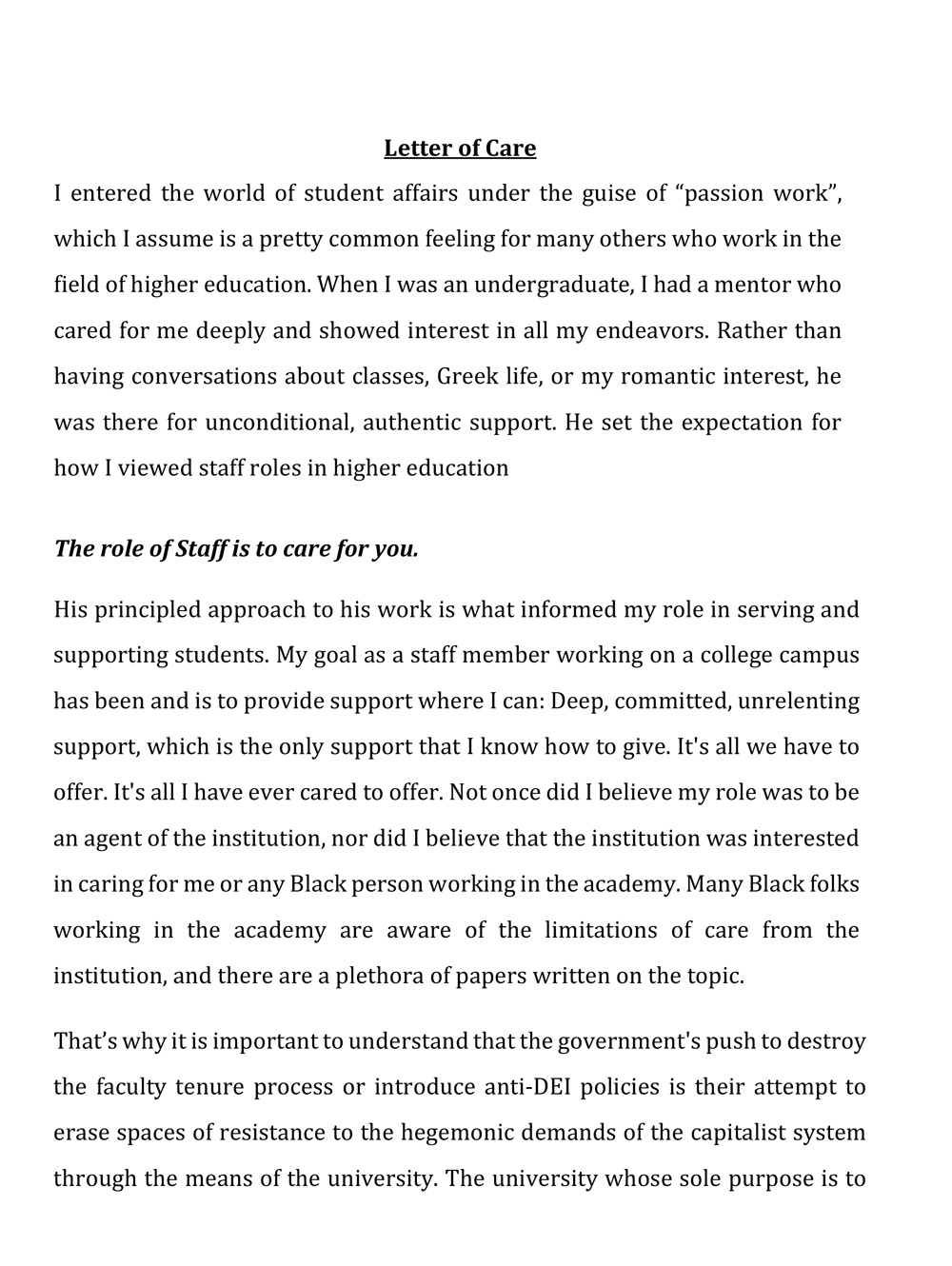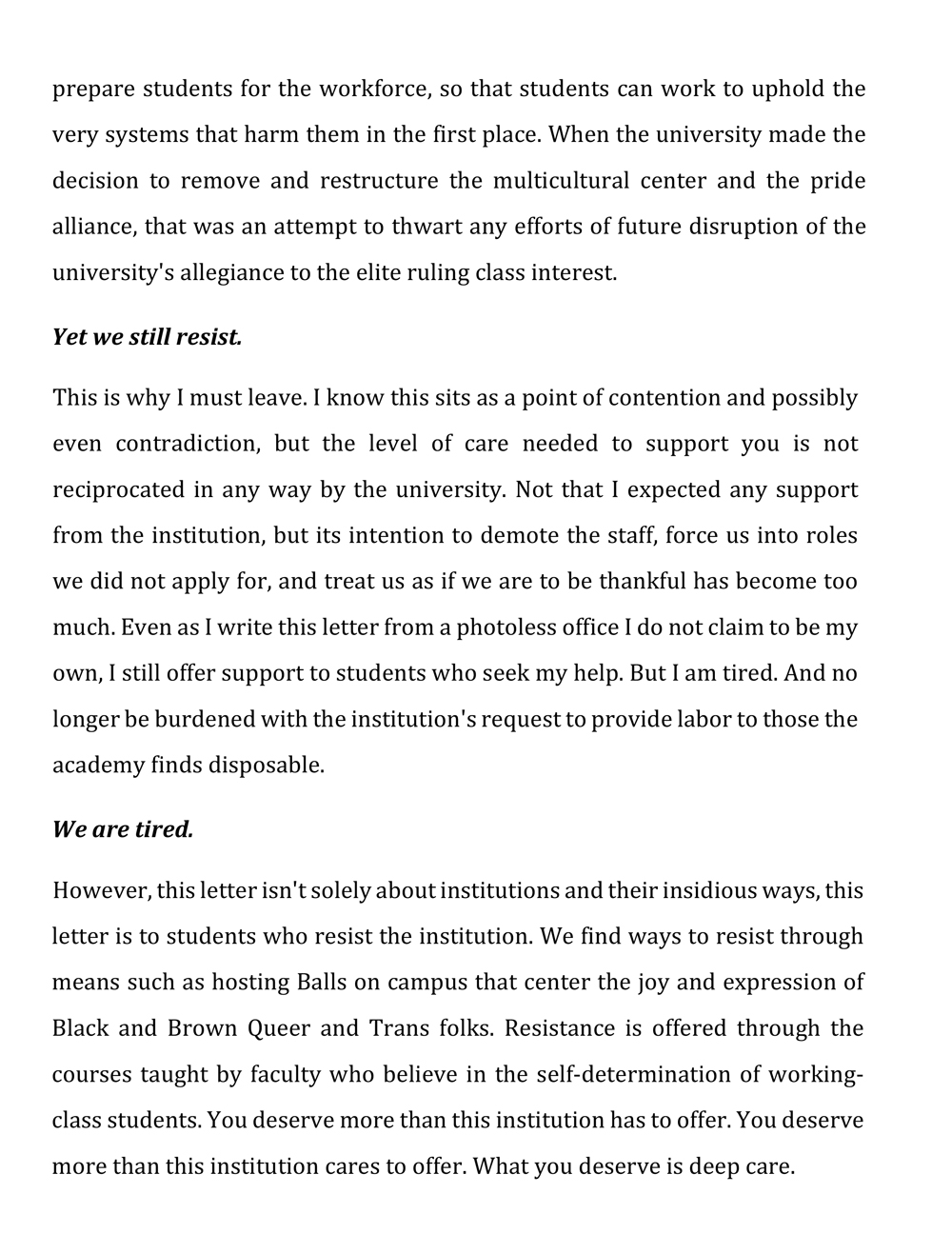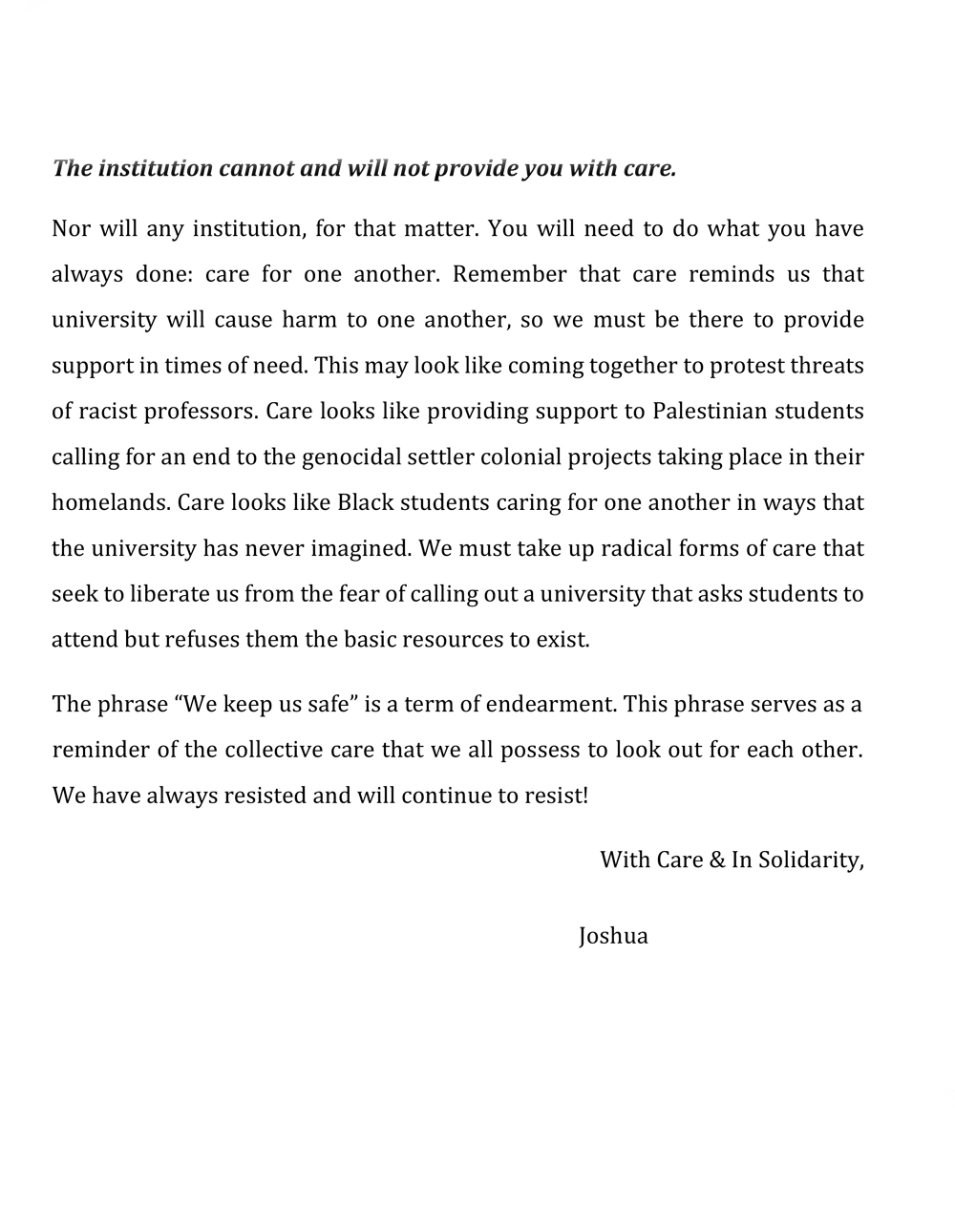A racist counter-offensive in Texas
The loss of DEI, its impact, and its legacy

As part of a nationwide offensive by right-wing legislators in twenty-two states, Texas passed SB17 in 2023. The law prohibits all state-funded colleges and universities from establishing or maintaining diversity, equity, and inclusion [DEI] offices, and bans the hiring or assignment of an employee to perform the duties of that office.
It also prohibits institutions from soliciting DEI statements from job candidates, or giving preference to any applicants “on the basis of race, sex, color, ethnicity or national origin.” Any mandatory diversity training “implemented in reference to race, color, ethnicity, gender identity, or sexual orientation” is also banned.
The impact of this law has been immediate and profound on college campuses. At the University of Texas, Austin, numerous offices were closed, and over sixty people were fired. This included the closure of the multicultural center and an end to scholarships for undocumented students. LGBT Centers across the state were closed.
At the University of North Texas (UNT), Joshua Hamilton, the Director of the Multicultural Center, and a member of the Tempest Collective, resigned his position in the aftermath of UNT’s response to SB17, the closure of its LGBTQ Center, and the transformation and de facto erasure of the Multicultural Center, itself a product of a complicated history of struggle of co-option. Tempest interviewed Joshua about his experience, the impact of the rightwing attack on public universities in Texas, and the lessons he is drawing.
At the conclusion of the interview, we publish the powerful letter Joshua shared with his community at UNT at the time of his resignation.
TEMPEST: What is the history of the Multicultural Center at the University of North Texas?
Joshua Hamilton: The Multicultural Center was founded by Black and Brown students, growing out of fights in the 1960s and 1970s for a common space. It started in a closet, and they fought for an actual center, and then staff. It followed the trend of the struggle for other “ethnic” centers that came out of San Francisco State, for example.
This was a time when Black students were organized across the country—you know, part of a Third World movement—and becoming ever more conscious and fighting for a space on this campus to be recognized. The center was born from those struggles in Texas, particularly North Texas.
So, the center has been around since the 1970s, and the Office of Diversity itself has been around since the 1990s, which is kind of rare for a Texas school. But you know, it also depends on how you frame it, right? Like they were there, but the work they did was to maintain the institution. The Office of Diversity only had a few staff members, a relatively small budget, and very little political power to wield any material change on campus. Arguably, since its inception, the office has been a threat. The far right’s attack on Critical Race Theory and free speech in Texas focused mainly on faculty and their ability to teach courses. They felt a threat, I believe, that student services were caught up in this attack, either by accident or strategy—but I do not believe diversity offices began as the main targets.
TEMPEST: And the transformation of the center from the 1970s to the office it became in the 1990s, what do you know about that process?
JH: I was fortunate to meet some elders on campus. From what I understand and have been taught, the center went through many iterations. This isn’t the first fight that it has been through, and it won’t be the last. There is a history of struggles at UNT, and in the 1990s, it came to a head when there was an attempt to remove or reallocate funds from the center. And the person serving as director at the time was done with it and played a role in opposing the cuts. I’m unsure if they were fired, but they were no longer in that role. As a result, the students protested and fought. They ended up getting a physical space out of that fight but under the auspices of the Office of Equity, which turned out to be a contradictory compromise.
TEMPEST: When did you first come into the job? At that stage, what was the role of the office? What was the scope of your work?
JH: I came into the job in 2022. The role of the office overall was four-pronged. There was the multicultural center, which is supposed to be like a multiracial space. And then you had our Pride Alliance, which is our LGBT, queer, two-spirit space. The office also housed a training office, which would handle DEI training like you see in the corporate world, anti-bias workshops and the like. Finally, there was a legal office that handled Title IX issues, violations, code of conduct violations, and other types of litigation.
TEMPEST: The legal and training offices: Were they outward directed? For example, if there were incidents of racism on the campus, what role, if any, would they play?
JH: Yeah, so it was inward. Both offices were set up to protect the institution, right? Diffuse student movement, right? Or faculty backlash. And so a DEI office and student affairs captured much of the student’s revolutionary organizing energy. Their goal or idea was to block things from escalating to protect the institution from lawsuits in the future. So, for example, if a student filed a complaint, like a Title IX complaint about harassment, they would try to resolve things internally and make a record.
They could say, “Well, we met with the student and provided due process.” Reflecting on it, there were times when issues or struggles were intercepted before harm escalated. But it was almost always to do the bare minimum the institution could get away with.
As a whole, the office was a very strategic effort. There were times when they would do positive things like provide scholarships and funding, you know, help keep, Black and Brown students in school. But it was a trade-off: “We gave you this and then we’re going to use this office to protect the institution and to de-escalate or contain struggle.”
TEMPEST: So what was your role?
JH: I oversaw the space as a director at the multicultural center. My function mainly was programming and advocacy through a racialized lens. I supported Black student groups, the various student associations, like the Native American student associations, and the Asian student associations. But we were the wing that would fight for money and support and resources, right? We were able to provide resources that were, you know, not often allocated to these groups.
We helped build spaces for students to come together, be in community, organize, and learn to raise arguments and criticisms around issues, locally and nationally.
It was a space that they had asked for. The way I think about it, the multicultural center is one of the only spaces on campus that was thoughtful about the students, about student programming, and about student activities. It was one of the few things on campus that was theirs.
To be clear, not every student organization that came through was politically aligned. Often, for them, it was a space where they felt like they could exist. They couldn’t exist elsewhere on campus, right? Universities, especially white universities, are microcosms of the world. We like finding spaces where we feel like we can be ourselves. And that’s kind of what the center served for a lot of folks.
TEMPEST: And you got there in 2022. Did you know anything about the history during 2020, during the uprising?
JH: One of the reasons that the center is gone now is that when there were any issues—national or local—when the students needed space, that’s where they came. So in 2020, they came to us looking for guidance. They came looking for people they can trust. The center was that. It was a space you could trust. So you know, when 2020 hit, and people were making demands at the institution, like, that was the space they were coming through, right?
For additional context, UNT had an issue in 2019 when a white lawyer working for the institution went on stage and said the “N” word. Students were rightfully upset. Out of this, the students created affinity groups and organizing spaces. Students sent out a list of demands and engaged in direct action at a Board of Regents meeting.
When the George Floyd rebellion started, organizing was already underway. 2020 was no different. Students looked to the center for support.
The state knew that.
TEMPEST: So when the law changed in 2023 with the passage of SB17, what was the response of the institution?
JH: I was working as a director of the Multicultural Center. The law states that no student service office can receive state funds if it is doing work that consists of advocacy around gender, sexuality, and anti-racism. Because of how the state framed it—if you break these laws, we won’t fund you—UNT sought to protect its funds. Unlike, for example, Texas A&M, UNT does not have an endowment and does not have significant outside funding.
Our university renamed the office, eliminated our LGBTQ Center and demoted all staff members. They forced me to work in student activities on campus. The Multicultural Center is now the Center on Belonging and Engagement. CBE. So—nothingness. Yeah, a bunch of nothingness. They changed the name, took down the history, got rid of all the books that were there. The important work we were doing is no longer happening.
TEMPEST: In the face of SB17, has there been a response, organizing? Do you have a sense as to what it’s going to look like in the next six months or a year?
JH: Yeah. So one thing was there was Texas for DEI and they were organizing around it. We had folks up in North Texas, professors who were just amazing, supportive, and helpful with students, with staff, just like talking through things.
But students have already been messaging me. Like they’re already changing graduate contracts and stuff like that, and the students will have to struggle.
At the beginning of each year, we would have 150 Black students do a weekend leadership retreat, right? Well, they removed the resources for it. Those Black students that would have found a home in that way, will have to respond. There is an immediate impact. Retention was already declining at the institution for Black students by 9 percent. But that is still like five or six thousand black students on a majority-white campus.
So, students are already messaging me and talking about the next steps. The center was won in struggle, and we know from history that we can organize and fight back.
TEMPEST: What are you doing now?
JH: Trying to pick up the pieces and find work. But I’d rather be here than working in Student Activities. I mean, it was already compromised. It was compromising my morals, you know. It’s hard to enter a space where we are here receiving this treatment, right?
It was intentional to eliminate the people who, you know, the institution deemed radical. But while some of my colleagues are self-described radicals, some people were just questioning and critiquing, not on board with the way the institution was willing to erase Black life and Black history. They didn’t want a place like the LGBTQ center that would fight to help people change their legal names.
Sometimes, folks on the Left, or sometimes a little more radical, were entirely dismissive of DEI, not understanding the contradictory elements that it is (or was)—a compromise that came out of a massive struggle. I mean, fundamentally, and it’s like the push and pull. So yeah, of course, it’s a liberal accommodation, it’s complicit, and it’s limited, and it’s fucked up in many ways. At the same time, it holds that seed you’re talking about because it’s a product of our past struggle.
I don’t think DEI is something like a radical movement. But, we should consider the state’s willingness to eliminate the Right’s fear of the possibility of what it could create. And the people that come through that do become radicalized, right?
It proved the state’s point for those few students who go to work for IBM or whatever, many other students came through who have been radicalized. These spaces can intervene in radical moments. So they said, “We gotta destroy all that shit.”
What follows is the note Joshua Hamilton circulated to his community at UNT upon his resignation:



Featured Image credit: atmtx; modified by Tempest.
Opinions expressed in signed articles do not necessarily represent the views of the editors or the Tempest Collective. For more information, see “About Tempest Collective.”
We want to hear what you think. Contact us at editors@tempestmag.org. And if you've enjoyed what you've read, please consider donating to support our work:
DonateJoshua Hamilton View All
Joshua Hamilton is a member of Tempest and an organizer located in Dallas, TX. He has worked in higher education, as an instructor and staff member, for over twelve years.
